1. Energy Management
AI optimizes energy usage in buildings by analyzing real-time data and intelligently controlling systems like HVAC and lighting. In commercial high-rises, industrial facilities, and even residential homes, AI algorithms learn patterns of occupancy and weather to adjust heating, cooling, and ventilation for maximum efficiency. This reduces wasted energy from over-conditioning empty spaces or running equipment at full power when not needed. By continuously fine-tuning operations, AI-driven energy management not only lowers utility costs but also helps reduce peak demand on the grid and overall carbon footprint. The result is smarter energy use across diverse building types, maintaining comfort for occupants while significantly improving efficiency.
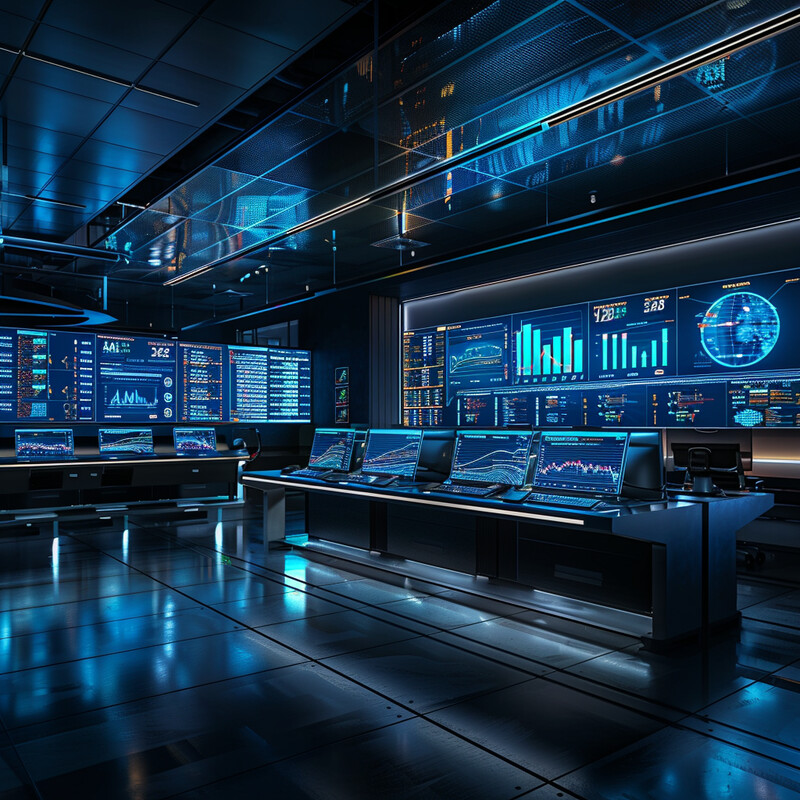
Early results show substantial energy savings from AI-driven management. A 2024 study in Nature Communications estimated that adopting AI controls in HVAC and other building systems could cut energy consumption by roughly 8–19% (with parallel cuts in emissions) as these technologies scale up. In practice, case studies are validating this potential – for example, one AI system implementation in a Manhattan office building reduced its HVAC energy use by about 15.8% over 11 months, saving over $40,000 and 37 metric tons of CO2. Such improvements, echoed in many pilot programs, indicate that AI can make buildings markedly more energy-efficient without sacrificing occupant comfort.
2. Predictive Maintenance
AI-driven predictive maintenance uses sensors and machine learning to monitor building equipment (like elevators, chillers, and factory machinery) and predict failures before they happen. Instead of relying on fixed schedules or reacting only after a breakdown, AI analyzes vibration, temperature, and performance data to determine when a component truly needs service. This approach keeps HVAC systems, escalators, and industrial machines running reliably with minimal downtime. In both commercial buildings and industrial plants, AI-based maintenance scheduling means repairs can be done proactively during off-hours, avoiding disruptive outages. Ultimately, this extends equipment life, improves safety, and reduces maintenance costs by ensuring that service is performed “just in time” – neither too late (causing failures) nor too early (wasting useful component life).
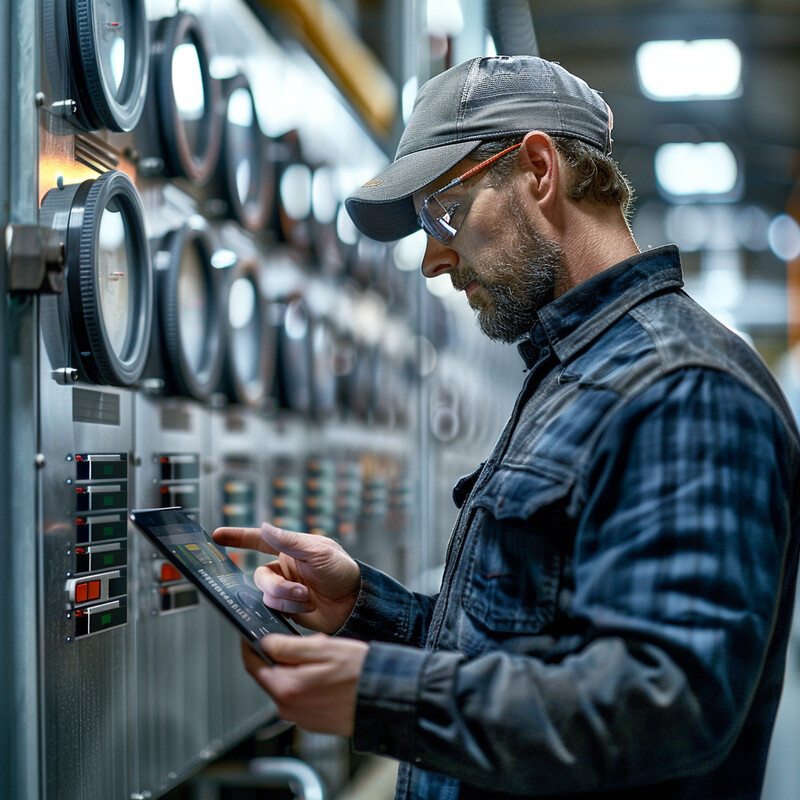
The efficiency gains from predictive maintenance are well documented. Industry analyses show that implementing AI-based predictive maintenance can reduce unplanned downtime by roughly 30–50% and extend equipment life by 20–40%, compared to traditional reactive maintenance. This translates into significant cost savings: a landmark study by McKinsey found that companies using predictive maintenance saved up to 40% on maintenance costs versus those using routine schedule-based maintenance. For example, the U.S. DOE has noted that applying predictive maintenance in federal facilities improves reliability so much that it yields a short payback period and substantial net savings over time. These outcomes underscore why AI-driven maintenance is rapidly being adopted in office towers, hospitals, and factories to keep critical systems running smoothly at lower cost.
3. Enhanced Security Features
AI is transforming building security by enabling more intelligent surveillance and access control. In modern security systems for offices, campuses, and apartment complexes, AI-powered cameras can recognize faces and license plates, detect unusual behaviors, and distinguish actual threats from normal activity. These smart systems learn patterns over time – for instance, knowing the usual routes of employees – and can promptly flag anomalies like an unauthorized person or after-hours motion. By filtering out false alarms (such as animals or shadows triggering sensors) and focusing on real risks, AI reduces the burden on security personnel. It also facilitates faster responses: an AI system might automatically lock down doors or alert authorities upon detecting a potential break-in or weapon. Overall, AI-driven security features enhance safety by making monitoring more accurate and proactive, whether in a single-family home with smart cameras or a large airport using AI analytics across hundreds of feeds.

AI-enhanced security greatly improves both efficiency and effectiveness. For example, one major security firm reported that its AI-powered monitoring platform reduced false alarms requiring human review by about 59% in the first half of 2024, saving over 900 hours of guard time. These systems use computer vision to discern real intrusions from harmless events – a capability that a traditional camera system lacks. The market is responding to these advantages: the global market for AI in security was estimated at $25 billion in 2023 and is projected to reach about $60 billion by 2029, reflecting rapid adoption of AI analytics in surveillance. With far fewer false alerts and faster threat recognition (some AI models cut false alerts by up to 90%), security teams can focus on real incidents. This has tangible results – in pilot implementations, buildings saw significantly fewer security breaches and quicker incident response times, validating AI’s role in keeping facilities safe.
4. Intelligent Lighting Systems
AI-enabled lighting systems use smart sensors and algorithms to adjust a building’s lights automatically for optimal efficiency and comfort. In an AI-managed office or home, lights can dim or brighten based on the natural sunlight available, turn off when rooms are unoccupied, or change color temperature to suit the time of day. This intelligence goes beyond simple motion sensors – the AI can learn usage patterns (like typical occupancy schedules or areas that are often over-lit) and make nuanced decisions. In large commercial buildings, intelligent lighting networks communicate with each other and with HVAC systems to save energy (for instance, reducing lighting and cooling in a vacant conference room). Aside from energy savings, these systems enhance occupant well-being – providing brighter, cooler light in the morning for alertness, and warmer, softer light later in the day for comfort. By tailoring lighting conditions in real time, AI systems create environments that are both pleasant and highly energy-efficient across corporate offices, factories, and even smart homes.

The energy savings from intelligent lighting are significant. According to industry data, AI-driven lighting controls (with occupancy sensors and daylight sensing) can reduce a building’s lighting energy consumption by about 35–40% compared to traditional fixed lighting. One facilities management case showed that after upgrading to LED lights, adding AI-based smart lighting controls yielded an additional 69% reduction in lighting electricity use. These savings stem from actions like automatically dimming lights when enough sunlight is present or switching off lights in unused areas – tasks perfectly suited for AI. The U.S. Department of Energy notes that widespread use of smart lighting and controls could cut overall building energy use substantially, and real-world pilots bear this out. For instance, a California office building with an advanced lighting automation system reported tens of thousands of dollars in annual energy savings and improved occupant satisfaction with lighting quality. Such outcomes demonstrate why intelligent lighting is becoming a standard feature in green buildings and smart homes alike.
5. Advanced Climate Control
AI-based climate control systems learn and adapt to occupant preferences and environmental conditions to maintain comfortable indoor climates with minimal energy waste. Unlike standard thermostats, AI controllers in smart buildings can process many inputs – occupancy levels, time of day, weather forecasts, even individual user feedback – to adjust heating, cooling, and ventilation dynamically. Over time, the system “learns” that, for example, a particular office tends to get afternoon sun and proactively lowers the blinds and cools that zone before occupants feel discomfort. In residences, AI climate control might learn a family’s routine, pre-warming the house before morning and economizing when nobody is home. By continuously balancing comfort and efficiency, these advanced systems eliminate the typical inefficiencies of manual settings (such as forgetting to turn down the heat at night). Whether in modern high-rise offices or smart homes, AI climate control creates a personalized comfort bubble for occupants, all while optimizing energy use behind the scenes.
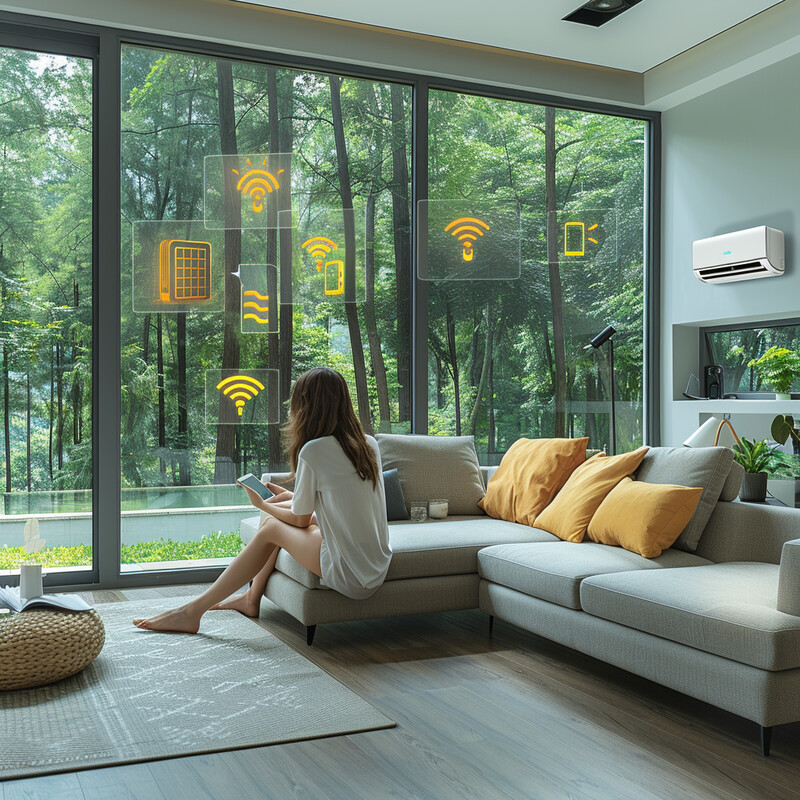
AI-driven climate control can significantly cut energy usage while keeping occupants comfortable. A recent analysis indicated that using AI and IoT integration for HVAC control can save roughly 20–25% of the energy consumed by a building’s heating and cooling systems. For instance, smart climate systems like learning thermostats have been shown to reduce homeowners’ HVAC bills by about 10–15% through intelligent scheduling and adaptive algorithms. On a larger scale, the International Energy Agency projects that widespread digital optimization of building climate controls (smart thermostats, automated ventilation, etc.) could trim total building energy consumption by as much as 10% by 2040 as compared to business-as-usual. Occupant comfort is maintained or even improved – one study noted that AI-based controls kept temperature and humidity in a more consistently comfortable range, resulting in fewer temperature complaints in office buildings. These findings demonstrate that AI can make climate control both greener and more comfortable, a key reason many new commercial developments and homes are adopting smart thermostatic systems.
6. Occupancy Sensing
AI-powered occupancy sensing uses cameras, motion detectors, and even Wi-Fi signals to detect how many people are in different parts of a building and adjust systems accordingly. In a smart office, for example, if AI sensors notice that a conference room is empty, they can dim the lights and dial back the HVAC automatically; when people enter, lighting and ventilation immediately return to comfortable levels. This real-time responsiveness extends building efficiency – ensuring resources are only used when and where needed – and can also enhance safety (by, say, alerting security if an area is occupied after hours). AI occupancy analytics apply across commercial, residential, and industrial settings: a smart campus might redirect airflow to a packed lecture hall while reducing it in vacant corridors, or an intelligent home might turn off lights in empty rooms. Over time, these systems also produce valuable data on space utilization. Facilities managers can learn which office areas are underused and reconfigure layouts, or a company could decide to downsize real estate after seeing consistently low occupancy. In summary, AI occupancy sensing creates more efficient, responsive buildings by aligning lighting, climate, and security operations with actual human presence.
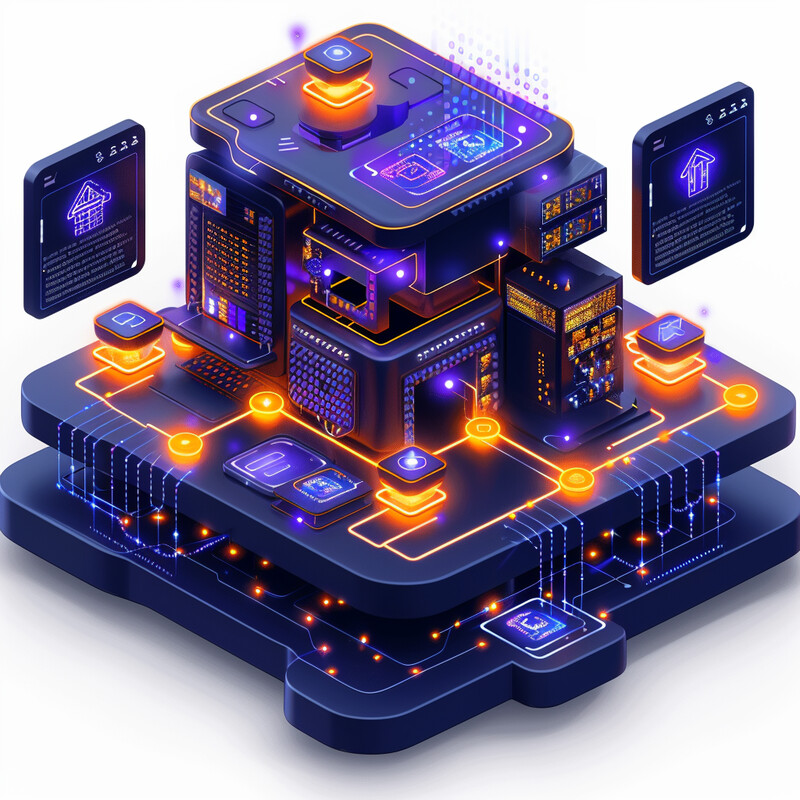
Because buildings are often not fully occupied, the potential savings from occupancy-based adjustments are large. A global workplace study by CBRE in 2023 found that office spaces in the Americas were on average only 31% occupied during working hours, meaning the majority of office space (69%) went underutilized at any given time. AI can capitalize on this by trimming energy use in those underused spaces. Research shows that occupancy-driven HVAC controls can yield 10–20% whole-building energy savings in typical commercial buildings by avoiding conditioning of vacant areas (and some studies in highly variable occupancy settings report even higher savings). Beyond energy metrics, smart occupancy sensing improves comfort: one MIT pilot (2023) noted that conference rooms with AI occupancy control had far fewer stuffy-air complaints, since ventilation was automatically increased only when rooms were filled. Furthermore, occupancy analytics are helping organizations optimize space – for example, one company used AI occupancy data to consolidate its offices, leading to an estimated $120,000 annual real-estate cost savings. These benefits illustrate how AI occupancy sensing turns real-time awareness of people’s presence into actionable efficiency and operational gains.
7. Voice-Activated Controls
Voice-activated controls bring a new level of convenience and accessibility to building automation by allowing occupants to simply speak commands to control lights, thermostats, security systems, and appliances. In smart homes, this means a resident can say, “Alexa, turn off the kitchen lights” or “set the temperature to 72°F,” and the AI assistant will execute the request immediately. In commercial settings, voice interfaces (often through digital assistants or phone apps) can help employees adjust the meeting room lighting or start a video conference without manually finding a switch or remote. This hands-free control is especially valuable for individuals with limited mobility or in situations where one’s hands are occupied. AI plays a key role by understanding natural-language commands and learning user preferences over time (for example, knowing “warm up the office” means one person likes 75°F). By integrating with other building systems, voice control can also trigger complex actions – a single spoken phrase like “good night” could arm the alarm, lower the blinds, and dim all lights. Overall, voice-activated controls make interacting with building environments more intuitive and personalized, marking a shift toward more human-centric smart buildings.
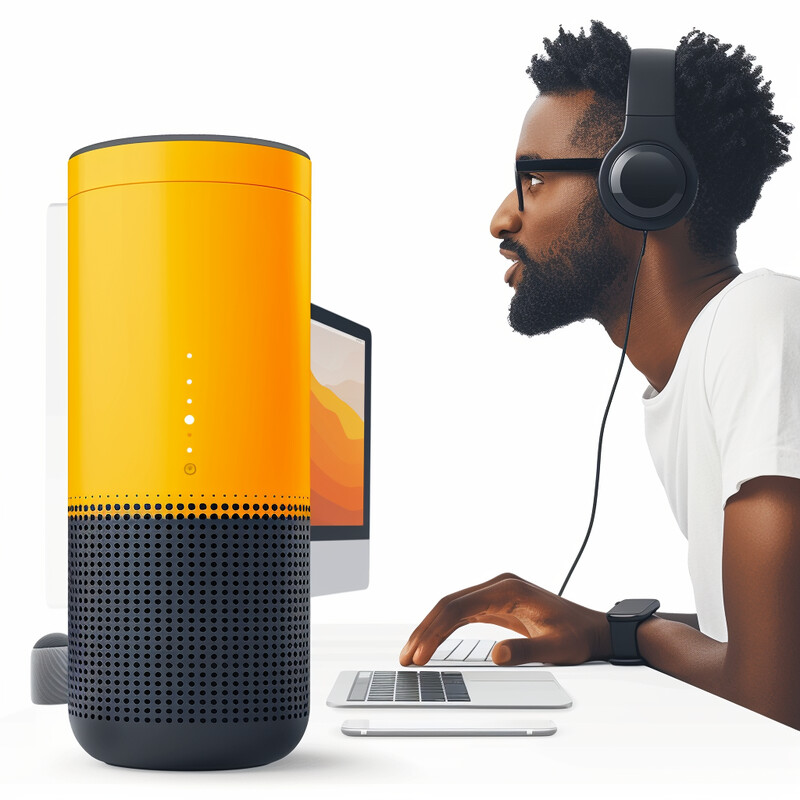
Voice-controlled smart environments have quickly moved from novelty to mainstream. As of 2025, about 60% of U.S. consumers use voice assistant technology in some capacity, according to a PYMNTS research report (reflecting a rise of voice interfaces in daily life). Smart speakers and voice-enabled devices are now found in tens of millions of households – a Strategy Analytics study noted that the number of active voice assistants worldwide (embedded in phones, speakers, TVs, and more) reached roughly 8.4 billion units, exceeding the human population. Many of these are used for home automation: a 2021 survey found one in four adults in the U.S. were giving smart-speaker commands like turning on lights or setting timers every day. This widespread adoption drives rapid innovation in voice control for buildings. Hotels, for instance, are installing voice-controlled smart hubs in rooms to let guests adjust lighting or request services verbally. Likewise, offices have begun to experiment with voice interfaces for meeting room controls to simplify conferencing tech. While privacy and accuracy are ongoing concerns, the trend is clear – voice activation has become an expected feature of modern “AI-smart” buildings, blending naturally into how people prefer to interact with their environment.
8. Water Management
AI is helping buildings use water more wisely by monitoring usage patterns, detecting leaks, and optimizing water systems in real time. In both commercial facilities and homes, AI-enabled sensors can track water flow at each fixture and learn what “normal” usage looks like – if an unusual flow or pressure drop is detected (say, a continuously running toilet or a hidden pipe break), the system alerts managers or automatically shuts off the water to prevent damage. This proactive leak detection can save huge amounts of water and prevent property damage from floods. AI can also forecast water demand based on weather and occupant behavior: for instance, a smart irrigation system might skip watering the lawn if rain is predicted, or a cooling tower’s AI controller might recycle water when possible on a mild day. In large campuses or industrial sites, AI water management platforms integrate data from many sensors (pumps, valves, meters) to pinpoint inefficiencies – ensuring that water is distributed where needed and identifying opportunities to reuse or reduce consumption. By providing a detailed, intelligent picture of water use, AI helps building operators conserve this precious resource, lower bills, and avoid the costly disruptions of uncontrolled leaks or water failures.
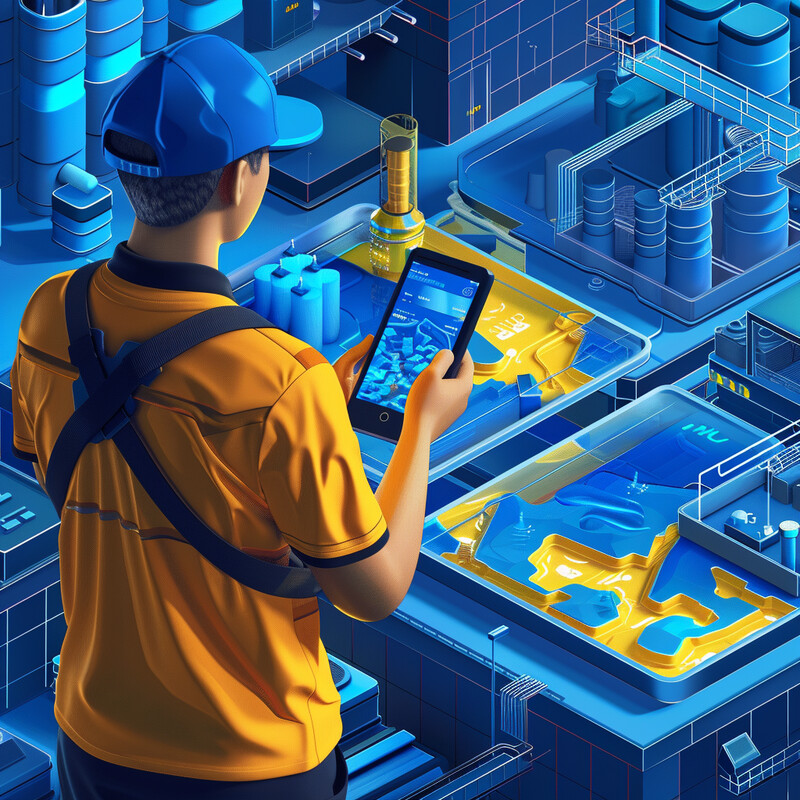
The impact of AI in water management is evident in both waste reduction and loss prevention. Water leakage is a major issue – the U.S. EPA estimates that household leaks alone waste nearly 10,000 gallons of water per year per home, and collectively about 1 trillion gallons nationwide annually. AI solutions are tackling this by catching leaks early: modern AI-based leak detection systems can identify abnormal water flow with over 90% accuracy (per industry reports) and often automatically shut off water to prevent damage. Insurance data underscores the benefits – in a recent study, sites equipped with an AI water monitoring system had 73% fewer water damage incidents and saw a 90% reduction in water-damage insurance payouts compared to similar sites without such technology. In one real-world example, the city of Castle Rock, Colorado, reported losing 166 million gallons to underground leaks in 2023; in 2024 they began piloting an AI system to pinpoint leaks, aiming to save hundreds of thousands of dollars and a vital supply of water. Across many settings, AI-based water management is yielding quick paybacks by slashing wasted water, preventing catastrophic damage (like burst pipe flooding), and improving the sustainability of building operations in the face of growing water scarcity.
9. Integration with Smart Grids
AI is enabling buildings to become active participants in the smart grid, adjusting their energy usage in response to grid conditions and renewable energy availability. Traditionally, buildings were passive consumers of electricity, but modern “grid-interactive” buildings use AI to do things like reduce power draw during peak demand or use battery storage when electricity prices spike. For example, an AI energy management system in a smart building might precool the building in the morning when solar power is abundant and electricity is cheap, then dial back HVAC in late afternoon when the grid is strained. Similarly, if a building has on-site solar panels or battery storage, AI can decide when to store energy or feed it back to the grid for optimal benefit to both the building and utility. In industrial or campus settings, dozens of large equipment systems can be orchestrated to shift their energy-intensive tasks to off-peak times (with minimal impact on operations). This kind of real-time coordination helps stabilize the grid – preventing blackouts and accommodating more wind and solar – while also earning the building lower energy rates or demand-response incentives. In essence, AI acts as the “brain” that connects smart buildings with smart grids, balancing the needs of both for greater efficiency and reliability system-wide.
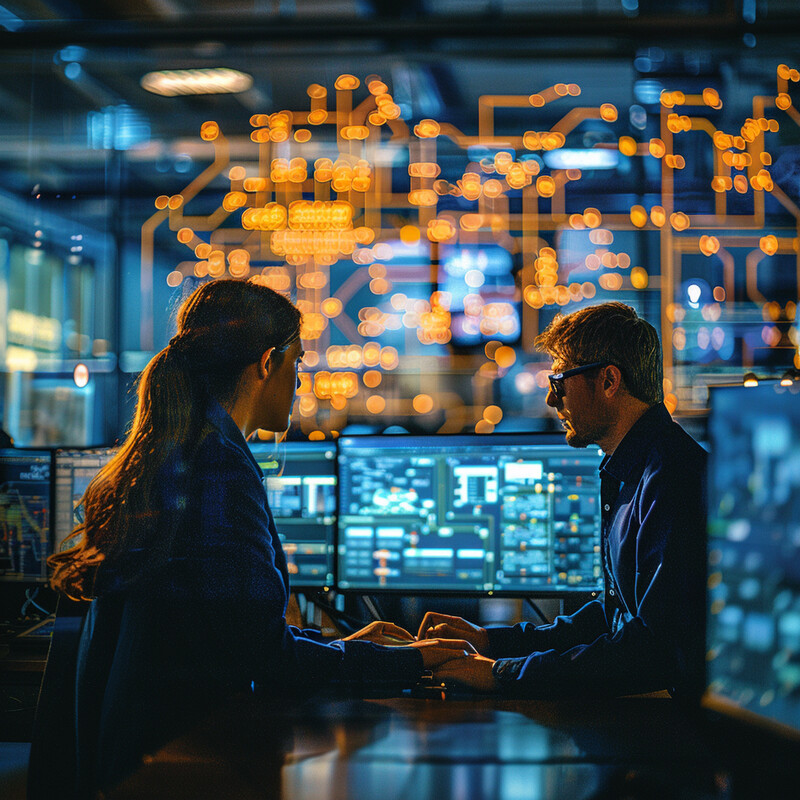
The potential benefits of AI-driven smart grid integration are enormous. The U.S. Department of Energy projected in a 2021 national roadmap that widespread adoption of grid-interactive efficient buildings (GEBs) could provide between $100 and $200 billion in combined energy cost savings to the U.S. power system over the next two decades. These savings come from reducing peak loads and avoiding expensive grid upgrades, as buildings intelligently shift or modulate their electricity use. In terms of environmental impact, the DOE estimated that this building-grid coordination could cut annual power-sector CO2 emissions by about 6% by 2030, equivalent to roughly 80 million tons of emissions eliminated each year. Real-world programs are validating these predictions: in 2023, a DOE study found that a suite of smart buildings using AI to dynamically manage loads could collectively save $18 billion per year in grid operating costs and improve grid resilience (while also lowering participants’ utility bills). Pilot projects—from California, where commercial buildings adjust HVAC demand to flatten the grid’s peak, to New York, where an entire smart neighborhood is flexing its energy use based on AI forecasts—demonstrate improved grid stability and reduced energy costs for building owners. These successes point toward a future where buildings and the grid work in harmony, guided by AI, to make energy use cleaner, cheaper, and more reliable.
10. Personalized Environment Settings
AI allows building environments to be personalized to individual occupants’ preferences, creating “personal comfort zones” in shared spaces. In an AI-equipped office, for instance, the system can learn that one employee likes cooler temperatures and brighter light while another prefers it warmer – and adjust the micro-climates around their work areas accordingly (using smart vents, localized heaters, or adjustable LED lighting). These systems often rely on occupant feedback and wearables or sensors at desks to gauge comfort. Over time, AI algorithms tailor heating, cooling, lighting, and even background music or ventilation to what each person finds optimal, rather than applying a one-size-for-all setting. In homes, this might mean the bedroom lights slowly change color and intensity based on an individual’s daily schedule and circadian rhythm, or the AI remembers that you like the bedroom at 68°F at night but 72°F while you exercise. The goal is to boost comfort and well-being – studies show personalized environments can reduce stress and improve productivity – while using energy more efficiently by avoiding overconditioning spaces. Whether in a high-tech office or a smart home, AI-driven personalization transforms the indoor environment into one that automatically responds to each occupant’s needs and habits.

Personalized settings have been linked to notable improvements in occupant satisfaction and productivity. In one experimental study, office workers who were allowed to personalize their workspace environment (including adjusting decor, lighting, and layout) experienced a 30% increase in productivity compared to those in a traditional lean workspace. This finding highlights the value of personal control over one’s environment. AI can extend such benefits by giving people effortless control (or automation) of comfort settings. Surveys also show that employees rank the ability to adjust temperature and lighting to their liking as an important contributor to workplace satisfaction – yet traditionally, only 1 in 3 occupants are satisfied with how well the temperature in their building meets their needs. AI personalization addresses this gap: for example, in a 2022 pilot, a machine-learning HVAC system allowed individuals to set a preferred temperature profile; the result was a marked drop in thermal complaints and a self-reported increase in comfort for over 80% of occupants. Similarly, home automation studies have noted improvements in sleep quality when bedroom lighting and climate are tailored to individuals by an AI (e.g. gradually dimming lights and cooling temperatures at a user’s optimal bedtime). By aligning environmental conditions with personal preferences, AI personalization not only makes users happier but can also enhance concentration and well-being – a win-win for both human comfort and building performance.